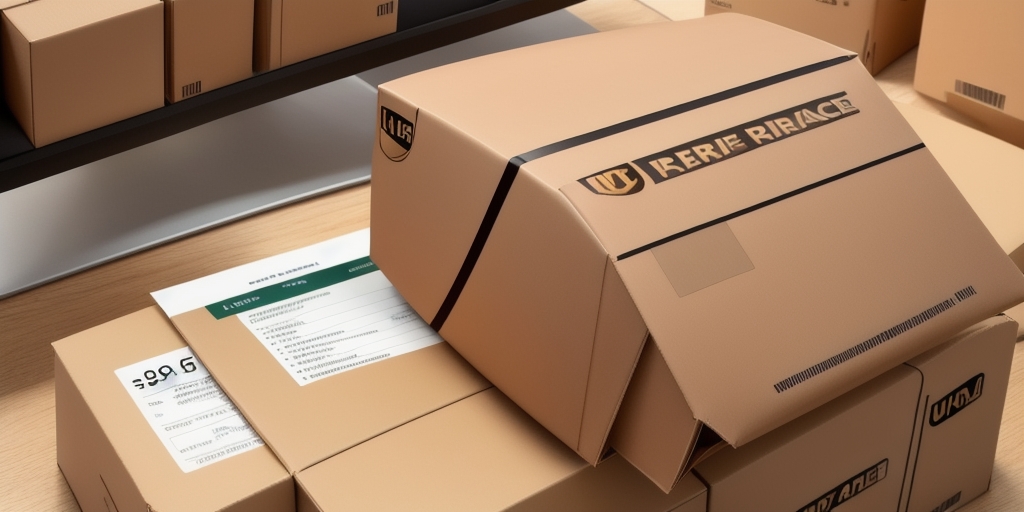How to Estimate Shipping Rates with UPS
If you're an individual or business that frequently sends out packages, having a comprehensive understanding of shipping rates is essential. Shipping costs can accumulate quickly, and ensuring you get the best possible deal without compromising on quality or delivery speed is crucial. In this article, we'll delve into how to estimate shipping rates with UPS, one of the world's largest shipping carriers.
Why It's Important to Estimate Shipping Rates
Before exploring the specifics of estimating UPS shipping rates, it's vital to understand the importance of this practice. Accurately estimating shipping rates can help you:
- Budget and Plan Effectively: Knowing shipping costs in advance allows for better financial planning, especially for businesses operating with tight budgets.
- Save Money: Understanding the factors that influence shipping rates and negotiating with carriers can lead to significant savings.
- Avoid Overpaying: Accurate rate estimation ensures you’re not paying more than necessary for shipping services.
Additionally, estimating shipping rates enables you to provide transparent shipping costs to your customers, enhancing satisfaction and loyalty. This transparency helps prevent cart abandonment due to unexpected shipping fees, fostering trust and improving your business reputation.
Understanding UPS Shipping Options
Before estimating UPS shipping rates, it's crucial to comprehend the various shipping options UPS offers:
- Ground: The most economical option for domestic shipping within the United States, ideal for non-urgent deliveries.
- Air: More expensive but faster, suitable for time-sensitive shipments.
- International: Designed for shipping packages outside the United States, with varying rates and delivery times based on destination.
UPS also provides additional services such as:
- Signature Confirmation: Ensures that the package is delivered only to the intended recipient.
- Insurance: Offers protection against loss or damage during transit.
- Saturday Delivery: Available for an extra fee, beneficial for urgent shipments requiring weekend delivery.
When selecting a UPS shipping option, consider the package's weight and dimensions. UPS has specific restrictions, and exceeding these limits can incur additional fees or result in package rejection. Accurately measuring and weighing your package is essential to avoid unexpected costs or delays.
Factors That Affect UPS Shipping Rates
Several variables influence UPS shipping rates, including:
- Weight and Size: Heavier and larger packages cost more to ship. For example, a package weighing 10 lbs will incur higher fees than a 2 lb package.
- Shipping Destination: Shipping to remote or less accessible locations, such as Alaska or international destinations, can increase costs.
- Service Level: Choosing between Ground, Air, or International services impacts the overall cost.
- Type of Item: Fragile or hazardous materials may require special handling, increasing shipping expenses.
- Package Value: Higher-value items may necessitate additional insurance or security measures, raising costs.
- Timing: Shipping during peak seasons, like holidays, or opting for expedited services can lead to higher rates.
According to the UPS Service Guidelines, these factors collectively determine the final shipping rate.
How to Use the UPS Rate Calculator
To estimate shipping rates with UPS, utilize their online Rate Calculator. This tool provides a quick estimate based on the package's weight, dimensions, and shipping destination. Here’s how to use it:
- Visit the UPS Rate Calculator on the UPS website.
- Enter the origin and destination zip codes.
- Input the package's dimensions and weight.
- Select the desired shipping service (Ground, Air, International).
- Review the estimated shipping costs provided.
Keep in mind that the UPS Rate Calculator offers estimates, not guaranteed prices. Actual costs may vary due to factors like fuel surcharges, residential delivery fees, and additional handling charges. For precise pricing, consult a UPS representative or use their Shipping Calculator Tool.
Step-by-Step Guide to Estimating Shipping Rates with UPS
Follow this step-by-step guide to accurately estimate shipping rates with UPS:
- Navigate to the UPS website and select the "Shipping" tab from the top menu.
- Choose the type of service you require: Ground, Air, or International.
- Enter the origin and destination zip codes.
- Provide the package's weight and dimensions.
- Select any additional services needed, such as signature confirmation or insurance.
- Click on the "Get a Quote" button.
- Review the available shipping options and their corresponding prices.
Remember, the estimated rates are based on the information provided and may not reflect the final cost. Additional charges like fuel surcharges, taxes, and handling fees can impact the total price. Always verify the final cost before completing your shipment.
Tips for Saving Money on Your UPS Shipping Rates
Here are effective strategies to reduce your UPS shipping costs:
- Choose the Most Economical Service: Select the cheapest service that meets your delivery requirements.
- Ship During Off-Peak Times: Rates are typically lower outside of peak seasons like holidays.
- Negotiate with UPS: If you're a business with high shipping volumes, negotiate for better rates.
- Use Third-Party Shipping Services: These can sometimes secure discounted rates on your behalf.
Additionally, leverage UPS's online tools for discounts and streamlined shipping processes. Utilize UPS's flat-rate boxes for heavier items, which can be a cost-effective shipping solution.
Understanding Fuel Surcharges and Other Fees
UPS may impose additional fees such as fuel surcharges, extended area surcharges, and residential delivery fees. These can significantly impact your shipping costs. To minimize these fees:
- Avoid Residential Deliveries: Whenever possible, have packages delivered to business addresses.
- Optimize Package Dimensions: To prevent dimensional weight surcharges, use the smallest possible packaging.
Some items, like hazardous materials or those requiring special handling, may incur extra charges. Always verify any potential restrictions or additional fees with UPS before shipping.
Common Mistakes to Avoid When Estimating Shipping Rates with UPS
Avoid these common errors to ensure accurate UPS shipping rate estimates:
- Incorrect Package Measurements: Always double-check the package’s dimensions and weight to prevent rate inaccuracies.
- Overlooking Additional Fees: Factor in all possible surcharges to avoid unexpected costs.
- Wrong Destination Zip Code: Ensure the shipping destination zip code is accurate to prevent delivery issues and incorrect rates.
- Ignoring Shipping Methods: Choose the appropriate shipping method based on delivery speed and cost requirements.
Choosing the wrong shipping method can lead to higher costs or delayed deliveries. For example, opting for air shipping for non-urgent packages unnecessarily increases expenses. Select the most suitable method based on your specific needs.
How to Compare UPS Shipping Rates with Other Carriers
To determine the most cost-effective shipping option, compare UPS rates with other carriers using online comparison tools. These platforms allow you to input package details and receive quotes from multiple carriers, enabling you to make an informed decision.
When comparing rates, consider not only the cost but also factors like delivery time, reliability, and customer service. Some carriers may offer lower rates but have longer delivery times or less reliable service, which could affect your business operations.
Look for discounts and promotions offered by carriers. Many provide bulk shipment discounts or special rates for regular users. Additionally, check if your business qualifies for any partnerships or exclusive deals that can further reduce shipping costs.
Best Practices for Estimating Accurate UPS Shipping Rates
Adhere to these best practices to ensure precise UPS shipping rate estimates:
- Accurate Package Measurements: Measure and weigh packages meticulously to avoid rate discrepancies.
- Include All Fees: Account for surcharges, taxes, and additional fees in your calculations.
- Verify Zip Codes: Ensure that both origin and destination zip codes are correct.
- Assess Package Value and Service Level: Consider the item’s value, required delivery speed, and desired service level when estimating costs.
How to Negotiate Better Shipping Rates with UPS
If your business ships large volumes with UPS, negotiating better rates can lead to substantial savings. Here’s how:
- Contact a UPS Account Representative: Discuss your shipping volume and history to explore potential discounts.
- Work with Third-Party Logistics Providers: These experts can negotiate favorable rates on your behalf by leveraging relationships with multiple carriers.
Additionally, consolidating your shipments or adjusting your shipping patterns can provide leverage during negotiations. Demonstrating consistent shipping volumes and a long-term partnership can also enhance your bargaining position.
By implementing the tips and best practices outlined in this article, you can accurately estimate UPS shipping rates and optimize your shipping strategy to save money and improve efficiency.
Additional Resources
For more detailed information on UPS shipping rates and services, consider visiting the following reputable sources:






















